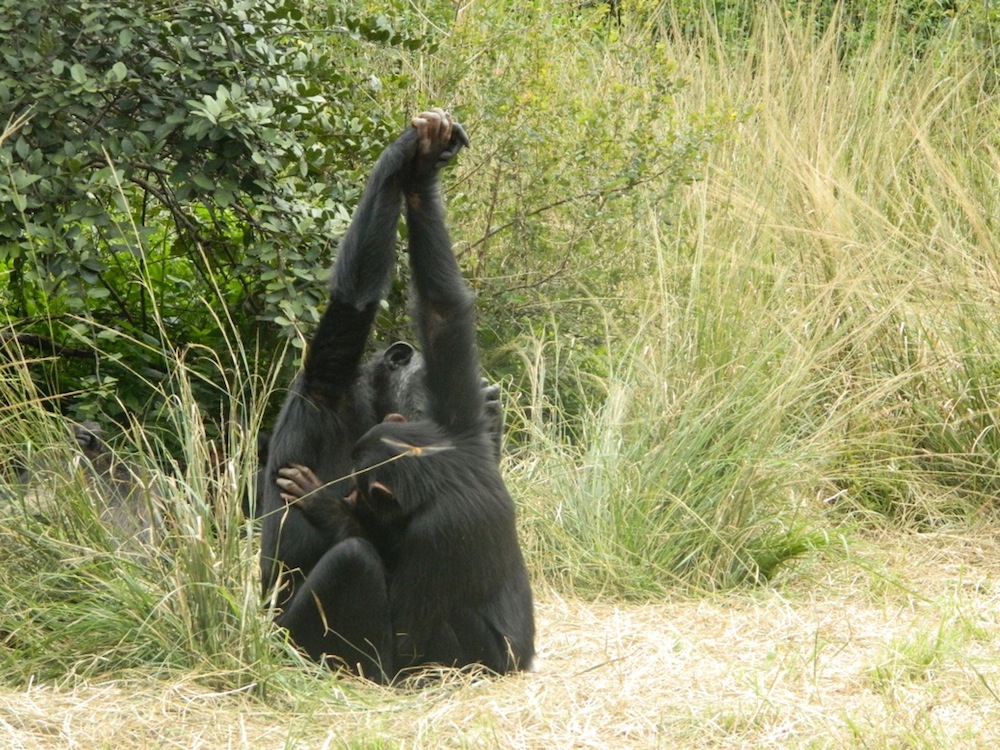When you buy through links on our site , we may earn an affiliate delegacy . Here ’s how it mould .
Everybody knows that humans ' closest animal relation are chimpanzees .
At least , that ’s beenthe accepted wisdomamong scientist for more than 30 years . But now two biologist are arguing that orangutans , not chimps , are our closest cousins .

A team of scientists is arguing that orangutans and not chimps are humans' closest animal relatives.
The chimp - human connectedness was constitute with DNA : Our two metal money ' genomes dissent by only a few percentage points , while the spread between human and orangutan DNA is a bit extensive .
But strong-arm , behavioral and fossil data point point to a greatersimilarity between humans and Pongo pygmaeus , say Jeffrey Schwartz , an anthropologist at the University of Pittsburgh , and John Grehan , director of science at the Buffalo Museum of Science . They heel features such as blockheaded tooth enamel , face fungus on males , the means we smile , and similar - shaped articulatio humeri blades as characteristics that humans and orangutang share .
Controversy

This controversy does not pose well with many experts in the flying field .
" The DNA evidence is so strongly against it , " said Frans de Waal , director of the Living Links Center at the Yerkes National Primate Research Center of Emory University in Atlanta . " It ’s a remnant from the Clarence Shepard Day Jr. that bones rule , but they do n’t anymore . "
Many experts trust the genetic data because they say the forcible similarities can be subjective . It ’s heavy to tell whether two species independently develop standardized feature film , or in reality come from a common antecedent with those features .

" Many of these characteristics , we have no clue if they ’re literally the same trait in evolutionary terms , " say Todd Disotell , an anthropologist at the Center for the Study of Human Origins at New York University . " It ’s hard to say they are due to shared common ancestry . We ’ve tied almost no physical trait yet down to their underlie familial cause . "
The DNA data is more concrete , he said . The sequences of corpuscle composing genes can either be the same or different .
" We ’re really talking [ comparing ] apples and Malus pumila , and orange tree and oranges , " Disotell toldLiveScience . " This anti - molecular posture is just head - boggling . "

deoxyribonucleic acid is king ?
But Schwartz and Grehan do n’t match that the deoxyribonucleic acid evidence is that airtight .
" Most of the comparisons that suggest that humankind and chimpanzee are so closely related to are really only search at a realm of two to three percentage of the entire genome , " Schwartz said .

Much of the rest of the genome is the non - coding region , where the sequence of molecules is less of import because the genes are put together out of order of magnitude , he read .
Furthermore , genetical similarity could develop severally , and do n’t necessarily match an evolutionary relationship , Schwartz and Grehan contend .
Malte Ebach , a researcher at Arizona State University ’s International Institute for Species Exploration , finds some persuasiveness in the orang - human claim by Schwartz and Grehan .

" They criticise molecular data where critique is due , " suppose Ebach , who was not involved in the new study . " paleoanthropology is base entirely on word structure , and there is no scientific justification to privilege deoxyribonucleic acid over morphological datum . Yet the human - chimp relationship , generated by molecular information , has been accepted without any examination . "
Long - ranging battle
The pro- and con - desoxyribonucleic acid factions may never see eye to eye .

" Jeffrey has been claiming this for many eld now in the face of increasingly insurmountable grounds to the opposite , " said David Smith , an anthropologist at the University of California , Davis . " My own expertise is molecular , and I can ensure you that there is not a whit of genetic evidence in bread and butter of his argument . "
Schwartz first proposed a standardized idea in 1982 , and has been brave out rebound ever since . The recent report with Grehan , issue in the June 18 edition of theJournal of Biogeography , tot up some new data point and analysis to the argument .
" All this is really ask people to criticize the assumptions that underlie their body of work and to not be afraid of entertaining alternative rendering , " Schwartz said in a phone interview . " I do n’t think that any one biologic element — DNA or anything else — is inevitably always going to give you a correct consequence . There are lots of cases I think that could be benefit by being revisit . "

If the approach privilege by Schwartz and Grehan is right , it ’s not just man ' family relationship to chimps , but all strictly molecular research show evolutionary relationships throughout the tree of life that would have to be retool , some say .
In other words , if the desoxyribonucleic acid grounds that many biologists apply as grounds turned out not to accurately reveal evolutionary relationships , the work of many molecular biologists would be suspect .
" If this was true , we would miss entire departments at major universities , " Disotell suppose . " I would have nothing to do . I would go become a carpenter . "

telecasting : Bonnie the Whistling Orangutan
Primate News , Information and Images
Top 10 Amazing Animal Abilities









